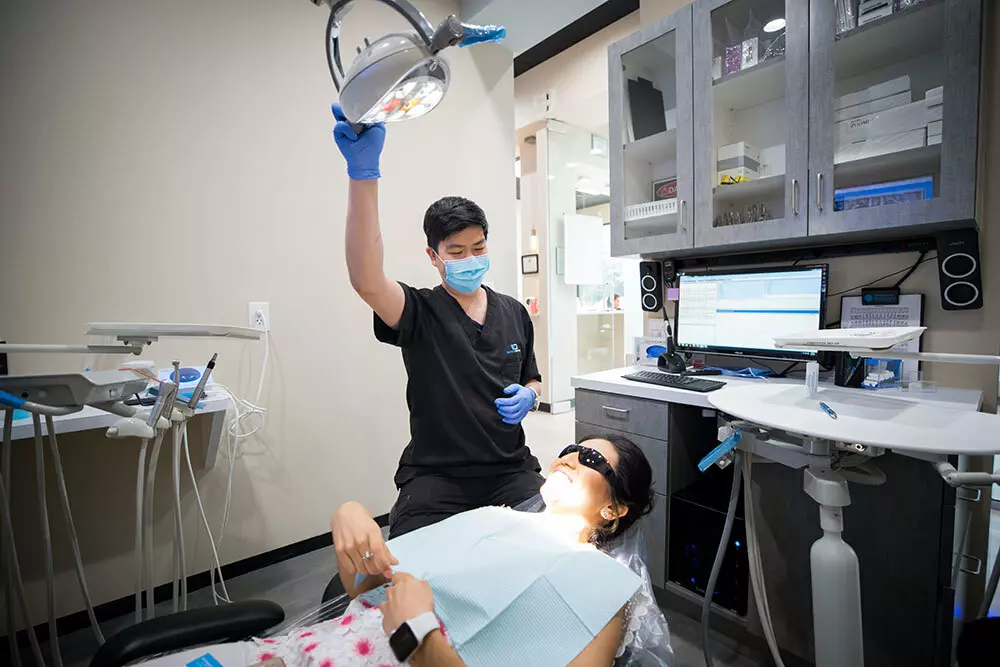Artificial Intelligence (AI) has become a revolutionary force in modern healthcare, and dentistry is no exception. From streamlining clinical workflows to improving diagnostic accuracy, the use of AI in dentistry is transforming how dentists detect and manage oral diseases. By analyzing digital records, X-rays, and even 3D scans, AI systems help clinicians detect early signs of oral health problems that might be missed in traditional exams.
With access to thousands of datasets, AI algorithms can identify patterns in oral images faster and more accurately than the human eye. This allows dental professionals to intervene sooner, improving patient outcomes and reducing the need for invasive treatments.
How Does AI Identify Oral Diseases Before They Become Severe?
AI systems in dentistry can detect early-stage conditions such as tooth decay, gum disease, oral cancers, and even bone loss. These systems use machine learning models that have been trained on millions of dental records and images. Here’s how it works:
- Image Recognition: AI tools analyze dental X-rays and intraoral images to highlight areas of concern. For example, it can detect a developing cavity or subtle signs of periodontal disease that may not be visible during a routine check-up.
- Predictive Analysis: By studying patient history and current symptoms, AI can predict the likelihood of certain oral diseases developing in the future. This empowers dentists to create preventive care plans before problems escalate.
- Data Comparison: AI systems compare a patient’s oral data with massive databases to recognize anomalies and provide real-time diagnostic insights.
This early detection not only improves health outcomes but also enhances the patient experience by reducing discomfort and cost.
Can AI in Dentistry Improve Tooth Extraction Outcomes?
Yes, AI in dentistry significantly improves the accuracy and success rate of procedures like tooth extraction. Before extraction, dentists must assess the position, health, and surrounding structures of the affected tooth. AI technologies analyze digital X-rays and CT scans to assist in:
- Identifying exact tooth root orientation
- Highlighting nerve locations and bone density
- Minimizing complications during extraction
- Planning the safest surgical path
Patients searching for “Tooth Extraction Near Me” now benefit from clinics that incorporate AI tools, as these practices offer more precise and safer treatment options.
AI also assists in postoperative monitoring, ensuring patients recover smoothly with minimal complications.
Why Is Early Detection of Oral Disease So Critical?
Oral diseases often begin subtly and progress silently. Conditions like gingivitis, oral cancer, and cavities can remain undetected until they become painful or destructive. That’s why early diagnosis is so vital—it allows for conservative treatments and prevents major oral health complications.
With AI-powered detection tools, dental professionals can spot issues long before symptoms arise. Here are a few key benefits of early detection using AI:
- Cost-Effective Care: Treating a cavity early is far less expensive than managing root canals or extractions.
- Less Invasive Procedures: Early-stage problems can be treated with non-invasive or minimally invasive techniques.
- Improved Prognosis: Especially for serious conditions like oral cancer, early detection can dramatically improve survival rates.
- Patient Education: AI tools can visually show patients their dental issues, increasing understanding and compliance.
What Are the Most Common AI Tools Used in Dentistry?
AI tools in dentistry continue to evolve, offering advanced functionality across diagnostics, treatment planning, and monitoring. Some of the most widely used applications include:
- Diagnostic Imaging Software: Programs like Pearl AI and VideaHealth assist in identifying decay, infections, bone loss, and more.
- Chatbots and Virtual Assistants: These help patients schedule appointments, ask about symptoms, or get pre-treatment advice.
- Digital Treatment Planning Tools: AI creates customized treatment plans by analyzing a patient’s oral data.
- Voice Recognition Tools: Used to record notes or document patient charts more efficiently.
These tools not only improve the dentist’s efficiency but also ensure a more personalized and precise patient experience.
How Do Dental Clinics Use AI to Offer Better Patient Experiences?
When searching online for “Tooth Extraction Near Me,” patients are increasingly drawn to clinics that use modern technology. AI enhances every step of the dental care journey—from initial consultations to postoperative follow-ups. Here’s how:
- Shorter Appointment Times: AI speeds up diagnostic imaging and decision-making, reducing time in the chair.
- Less Anxiety for Patients: Knowing their diagnosis is backed by advanced technology builds patient confidence and reduces anxiety.
- Customized Preventive Care Plans: AI helps design unique care plans that address each patient’s risk factors.
- Remote Monitoring: Wearable tech and mobile apps, powered by AI, can monitor oral hygiene habits and track recovery post-treatment.
What Are the Ethical and Practical Challenges of Using AI in Dentistry?
While AI offers numerous advantages, it also brings certain challenges:
- Data Privacy: AI systems rely on patient data, which must be securely stored and used ethically.
- Bias in Algorithms: If AI tools are trained on limited data, they may not perform well across diverse populations.
- Overreliance on AI: Dentists must use AI as a supportive tool—not a replacement for clinical judgment.
- Training Needs: Dental professionals must be trained to interpret AI data correctly and use the tools effectively.
Responsible implementation and proper training ensure that AI enhances rather than replaces human expertise in dentistry.
Are Patients Comfortable With AI-Assisted Dental Care?
Surprisingly, many patients respond positively to AI-assisted care—especially when it leads to clearer diagnoses and more accurate treatment plans. Transparency is key. When dentists explain how AI tools are used, patients tend to feel more reassured rather than intimidated.
Patients appreciate:
- Real-time visuals showing disease progression or improvements
- Faster and more accurate results
- Fewer follow-up visits due to accurate initial diagnosis
When paired with compassionate care, AI technology elevates the entire dental experience.
Is AI the Future of Preventive Dentistry?
Absolutely. AI in dentistry is paving the way for a new era of proactive and personalized oral care. From identifying cavities before they develop to supporting complex procedures like implants or tooth extraction, AI helps dental professionals deliver better care with higher precision.
Preventive dentistry is no longer just about regular cleanings and fluoride treatments. It now includes real-time risk analysis, predictive modeling, and customized oral health plans—all powered by AI.
Final Thoughts: Why Should You Choose a Dental Clinic That Uses AI?
If you’re searching for reliable Tooth Extraction Near Me, consider choosing a clinic that integrates AI technology. These practices are often ahead of the curve in diagnostics, patient care, and treatment success. AI supports dental professionals by reducing errors, improving outcomes, and ensuring patients receive the best possible care.
AI in dentistry is not about replacing dentists—it’s about enhancing their abilities. With the help of intelligent algorithms, dental professionals can detect oral diseases early, plan better treatments, and ultimately create healthier smiles.
By embracing this cutting-edge technology, both patients and providers take a step toward a smarter, more effective dental future.







